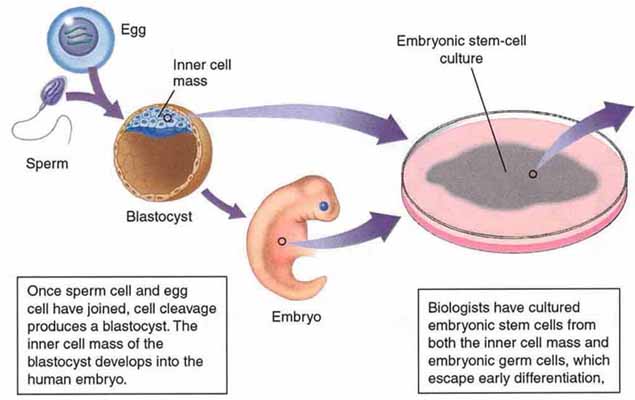
Primordial Meaning
Also found in: Dictionary, Thesaurus, Legal, Financial, Encyclopedia.
pri·mor·di·al cell
Primordial may refer to: Primordial era, an era after the Big Bang. See Chronology of the universe; Primordial sea See Abiogenesis Primordial nuclide, nuclides.
cell
(sel) [L. cella, a chamber] The basic unit of life. A cell is a group of self-sustaining biochemical reactions that are isolated from the environment by a selectively permeable lipid membrane. Among the key reactions are those that maintain a stable intracellular concentration of ions; for mammalian cells, typical internal concentrations include 140 mM K+, 5-15 mM Na+, 5-15 mM Cl-, and a pH of 7.2, which can be significantly different from their concentrations outside the cell. Other key reactions move molecules and molecular complexes within the cell, sometimes changing the cell's shape. These reactions, along with many others, require energy, and the generation of energy by breaking apart preexisting hydrocarbon molecules ('food') is the job of glycolysis and other characteristic intracellular metabolic reactions. See: glycolysis; metabolism; mitochondrion.Structure
Intracellular chemical reactions are controlled by enzymes that are organized in stable molecular complexes called organelles. The polymer-based organelles include centrioles and the cytoskeleton; nucleic acid-based organelles include ribosomes; and membrane-enclosed organelles include the nucleus, endoplasmic reticula, Golgi complexes, lysosomes, peroxisomes, mitochondria, and storage and transport vesicles. Atv offroad fury 2 nacs. See: illustrationIndividual mammalian cells are usually microscopic, typically ranging from 5 µm to 50 µm in diameter. In humans, lymphocytes are small cells (~6 µm in diameter), columnar epithelial cells (10 µm x 20 µm) are medium-size cells, and mature ova (120-150 µm) are some of the largest cells.
Cell Division
In mammals, all new cells arise from existing cells through cell division, and an animal's growth results largely from increases in the number of its cells, most of which differentiate into specialized cell types to form the body's various tissues. Cell division involves two major processes: karyokinesis, the division of the nucleus, and cytokinesis, the division of the remainder of the cell. When generating somatic daughter cells, karyokinesis uses a process called mitosis, which produces daughter cells with a full complement of chromosomes. When generating germ cells, karyokinesis includes a process called meiosis, which produces daughter cells with half the normal number of chromosomes. See: meiosis and mitosis for illus.
A cell
accessory cell
acidophilic cell
acinar cell
adipose cell
Adipocyte.adult stem cell
adventitial cell
air cell
alpha cell
alveolar cell
amacrine cell
ameloblast cell
anterior horn cell
antigen-presenting cell
Abbreviation: APCAPUD
argentaffin cell
astroglial cell
Astrocyte.atypical glandular cells
Abbreviation: AGCatypical glandular cells of undetermined significance
Abbreviation: AGUSAtypical glandular cells.
B cell
band cell
basal cell
basket cell
basophilic cell
beta cell
Betz cell
See: Betz cellsbipolar cell
blast cell
blood cell
bone cell
bone marrow cell
brush cell
burr cell
cancer cell
capsule cell
Satellite cell.cartilage cell
Chondrocyte.castration cell
CD3 cell
CD4 cell
CD8 cell
CD 34+ cell
cementoblast cell
cementocyte cell
centroacinar cell
chalice cell
Goblet cell.chemoreceptor cell
chief cell
chromaffin cell
chromophobe cell
Clara cell
cleavage cell
Blastomere.clue cell
columnar cell
columnar epithelial cell
cone cell
contrasuppressor cell
cortical cell
corticotroph cell
cuboid cell
cytotoxic cell
cytotoxic T cell
D cell
daughter cell
decoy cell
delta cell
dendritic cell
Downey cell
See: Downey celldust cell
EC cell
effector cell
embryonic stem cell
Abbreviation: ES cellendothelial cell
enterochromaffin cell
Abbreviation: EC cellenteroendocrine cell
ependymal cell
epithelial cell
ethmoidcell
ethmoid air cell
eukaryotic cell
F cell
fat cell
flame cell
flow cell
foam cell
follicle cell
follicular cell
folliculostellate cell
foreign body giant cell
G cell
ganglion cell
germ cell
giant cell
glial cell
gitter cell
globus cell
goblet cell
Golgi cell
See: Golgi, Camillogonadotroph cell
graft facilitating cell
granule cell
granulosa cell
gustatory cell
hair cell
heart failure cell
HeLa cell
helmet cell
helper cell
helper T cell
hematopoietic stem cell
hilus cell
holly leaf cell
horizontal cell
Hürthle cell
See: Hürthle cellhybridoma cell
See: hybridomahyperchromatic cell
I cell
interdigitating cell
interstitial cell
intestinal absorptive cell
islet cell
juvenile cell
juxtaglomerular cell
K cell

killer cell
killer T cell
Cytotoxic T cell.Kulchitsky cell
Kupffer cell
See: Kupffer cellL cell
labile cell
lactotroph cell
LAK cell
Langerhanscell
L.E. cell
Historically, an abbreviation for lupus erythematosus cell, a polymorphonuclear leukocyte that contains the phagocytized nucleus of another cell. It is characteristic but not diagnostic of lupus erythematosus.This distinctive cell may form when the blood of patients with systemic lupus erythematosus is incubated and further processed according to a specified protocol. The plasma of some patients contains an antibody to the nucleoprotein of leukocytes. These altered nuclei, which are swollen, pink, and homogeneous, are ingested by phagocytes. These are the L.E. cells. The ingested material, when stained properly, is lavender and displaces the nucleus of the phagocyte to the inner surface of the cell membrane. The L.E. cell phenomenon can be demonstrated in most patients with systemic lupus erythematosus but is not essential for diagnosis.
illustrationLeydig cell
See: Leydig's celllittoral cell
liver cell
lutein cell
lymphoid cell
lymphokine-activated killer cell
M cell
macroglial cell
marrow cell
mast cell
mastoid cell
mastoid air cell
matrix stem cell
memory cell
mesenchyme cell
mesenchymal stem cell
mesothelial cell
microglial cell
mitral cell
mossy cell
mother cell
mucosal cell
mucous cell
mucus cell
multinucleated giant cell
multipolar cell
muscle cell
See: musclemyeloid cell
myeloma cell
myoepithelial cell
natural killer cell
Abbreviation: NK cellnerve cell
Neuron.neural crest cell
neuroglial cell
Niemann-Pick cell
See: Niemann-Pick cellNK cell
nonstem cell
null cell
odontoblast cell
oligodendroglial cell
olfactory cell
olfactory receptor cell
osteoprogenitor cell
oxyntic cell
parabasal cell
parent cell
Mother cell.phalangeal cell
phantom cell
See: red cell ghostpigment cell
plasma cell
postganglionic cell
PP cell
pre-B cell
preganglionic cell
prickle cell
primary cell
primordial cell
primordial germ cell
progenitor cell
A cell (sometimes a stem cell) that produces cells of a particular lineage, e.g., a neuroblast.prokaryotic cell
Purkinje cell
See: Purkinje, Johannes E. vonpus cell
pyramidal cell
radial glial cell
red cell
red blood cell
Abbreviation: RBCRenshaw cell
See: Renshaw cellresting cell
reticular cell
reticuloendothelial cell
Rieder cell
See: Rieder cellrod cell
rosette cell
Rouget cell
See: Rouget cellS cell
satellite cell
scavenger cell
Schwann cell
See: Schwann cellsegmented cell
selenoid cell
See: red cell ghostsensory cell
septal cell
serous cell
Sertoli cell
See: Sertoli cellsex cell
sickle cell
signet-ring cell
skeletal muscle cell
See: musclesmooth muscle cell
See: musclesomatic cell
somatic stem cell
somatostatin cell
spiculed red cell
spider cell
Astrocyte.squamous cell
Synonym: squamous epithelial cellsquamous epithelial cell
stellate cell
stellate reticuloendothelial cell
stem cell
Sternberg-Reed cell
See: Reed-Sternberg cellstipple cell
striated muscle
See: musclesuppressor T cell
sustentacular cell
sympathicotrophic cell
sympathochromaffin cell
syncytial giant cell
T cell
A lymphocyte that responds to specific antigens, with the assistance of antigen-presenting cells (APCs). T cells arise in the bone marrow and migrate to the thymus gland, where they mature; then they circulate between blood and lymph, serving as one of the primary cells of the adaptive immune response. Immature T cells are called thymocytes. Mature T cells are antigen specific. Their surface receptors (T cell receptors, abbrev. TCRs) respond only to a single antigen. T cells are further categorized using another family of surface protein markers called clusters of differentiation (CDs). All T cells have a CD3 marker. Additional markers differentiate the subclasses of T cells. CD4 T helper cells serve primarily as regulators, secreting cytokines that stimulate the activities of other white blood cells. CD8 T cells (cytotoxic T cells) directly lyse (kill) organisms, an important defense against viruses; most CD8 T cells also produce gamma interferon (INF?), one of the strongest stimulators of macrophage activity. Synonym: T lymphocyte See: immune response; lymphocyte; immunological surveillance; T-cell receptorA T cell can only recognize the 'foreignness' of antigens after they have been modified by macrophages and other antigen-presenting cells (APCs). After this, T cells dominate the adaptive immune response by mobilizing B cells and other T cells of the cell-mediated immune pathways. T cells are responsible for type IV hypersensitivity reactions, such as graft rejection, and for tumor cell recognition and destruction.
See: cytokine; cell-mediated immunitytarget cell
tart cell
taste cell
taste receptor cell
taste cell.tear-drop cell
tendon cell
terminally differentiated cell
thymic epithelial cell
thymus cell
thyroid cell
totipotent cell
Touton giant cell
See: Touton celltransitional cell
trophoblast cell
tufted
See: mitral cellTürk irritation cell
See: Türk irritation cellTzanck cell
See: Tzanck cellundifferentiated cell
unipolar cell
Vero cell
visual cell
wandering cell
white cell
Leukocyte.white blood cell
Abbreviation: WBCLeukocyte.illustration
Want to thank TFD for its existence? Tell a friend about us, add a link to this page, or visit the webmaster's page for free fun content.
Link to this page: